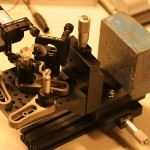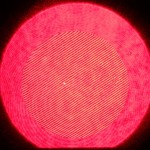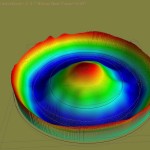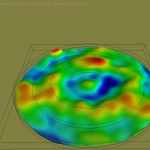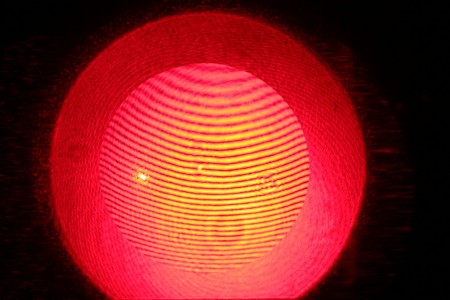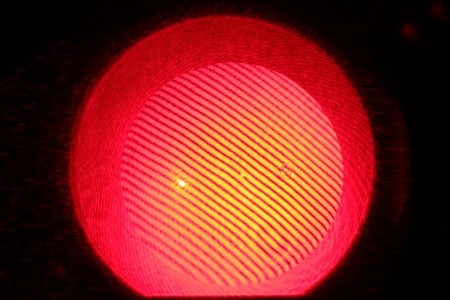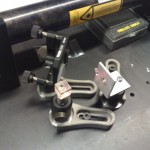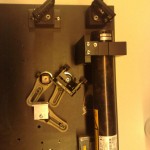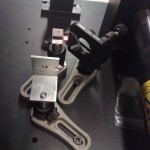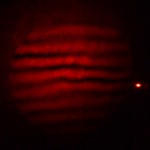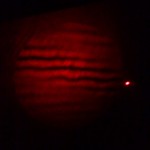Fringes from the University of Helsinki FTIR instrument, while aligning it using a HeNe laser. Imaged with af=600mm lens telescope and QHY5 USB-camera.
Tag: interferometry
Bath interferometer v2
Second try at a Bath interferometer. This time with a diode-laser, which has a larger output beam and results in more even illumination. Analysing the interferogram with OpenFringe and the Fourier-method shows our mirror is fairly spherical, 1/27th of a wave RMS from a sphere, but we have some figuring to do to get it paraboloidal.
Interferograms
This is how the interferograms from the Bath interferometer look like. Using either fringe-tracing or Fourier transform-based analysis it is possible to calculate the shape of the mirror. The most popular analysis programs seem to be FringeXP and OpenFringe.
Bath Interferometer
Most interferometer types used for optical surface testing require an expensive reference element from which the reference beam is bounced off. The interferometer then compares the wavefront from the reference element to the wavefront from the surface being tested. The Bath interferometer is a clever design which uses the test-mirror for both the reference beam and the test-beam. It's very simple to build, requiring just a laser, a 50/50 beamsplitter, a mirror, and a short focal length lens to expand the beam.
Here's my first attempt at building one, and taking pictures of interferograms from the 240mm telescope mirror we are polishing. The video shows how unstable the fringes are with the interferometer on a normal (wobbly!) table and in a typical open room with lots of air-currents. Moving to a better table and protecting the beam-path from air-currents with cardboard boxes should make for more stable interferograms which can be quantitatively analysed.
